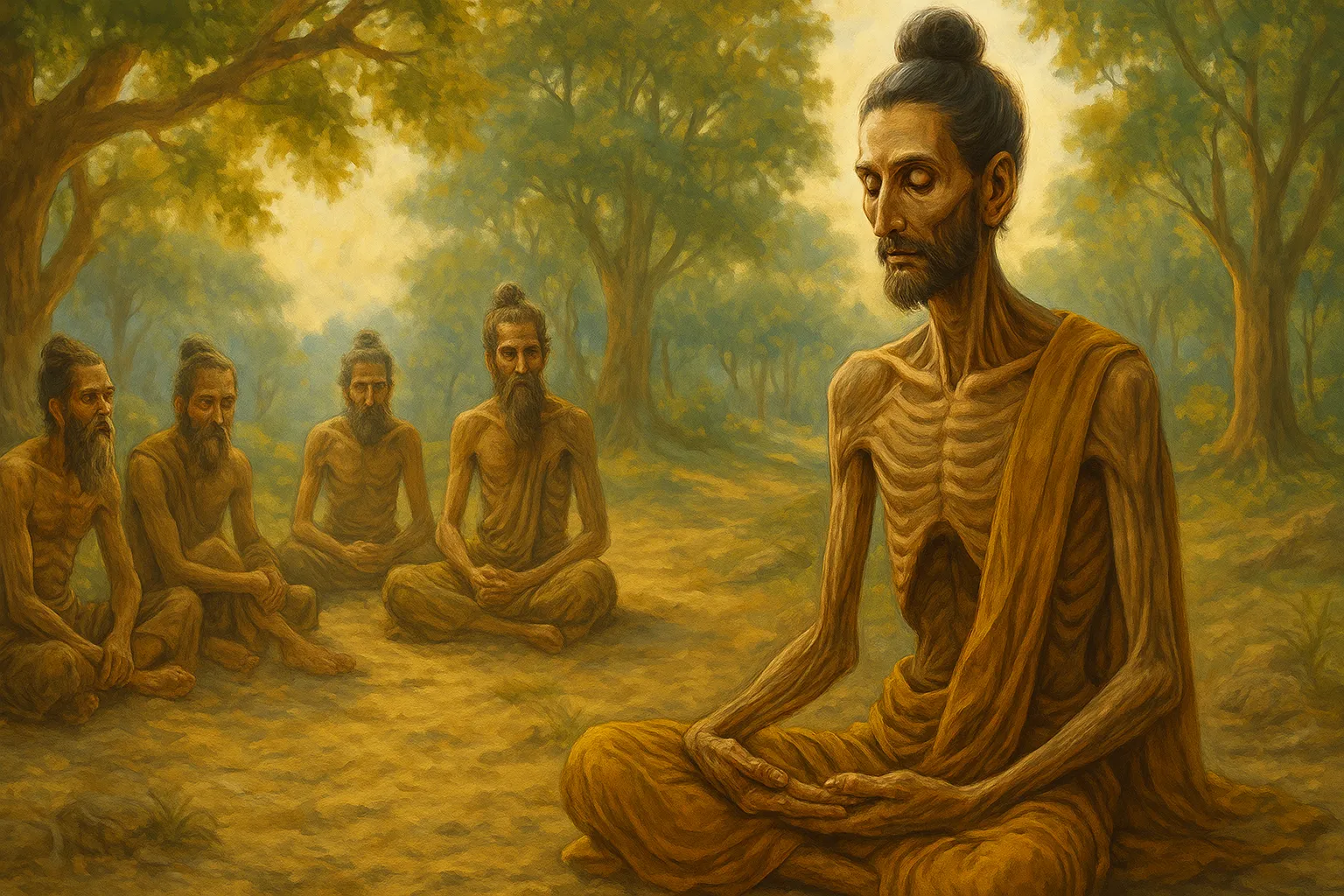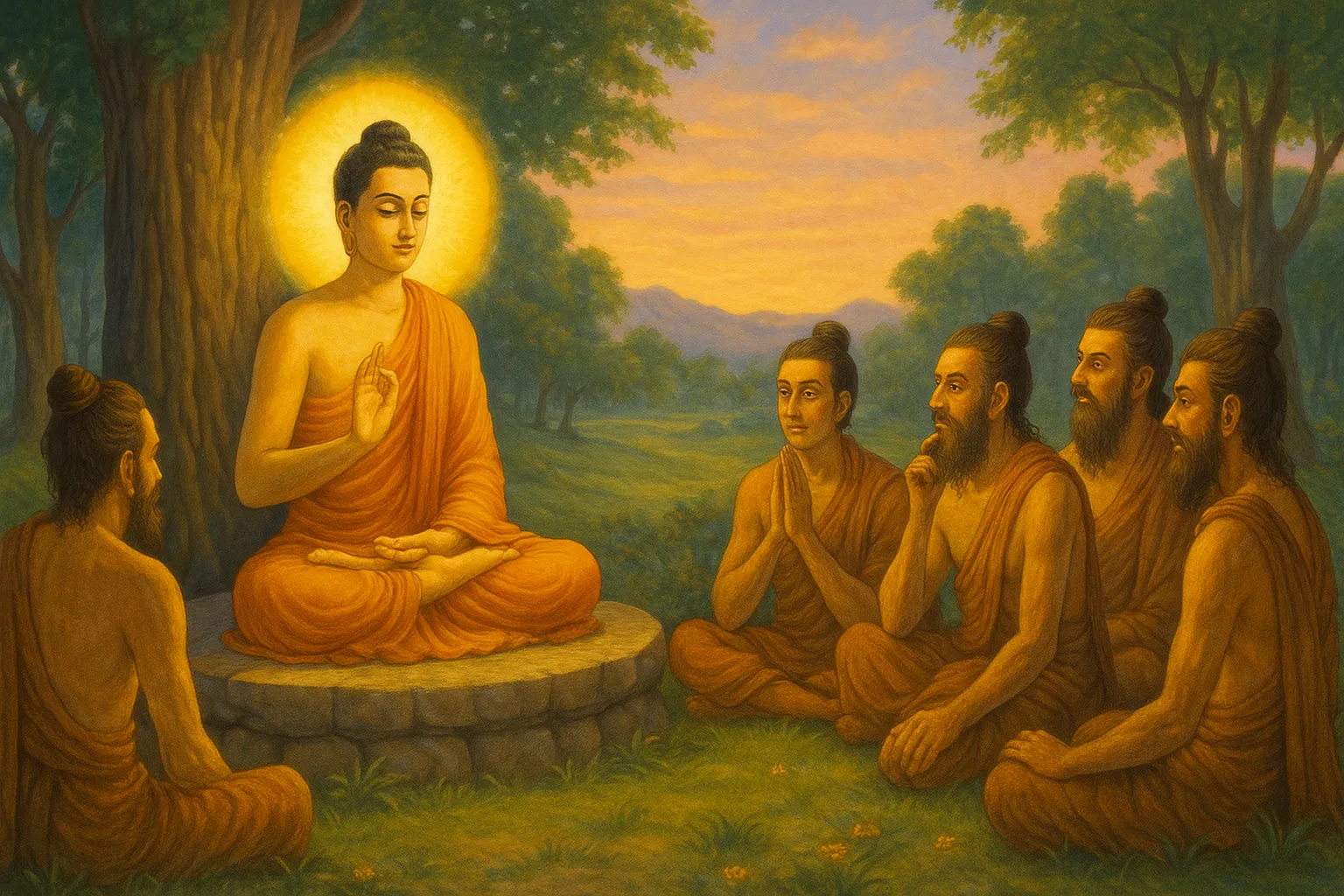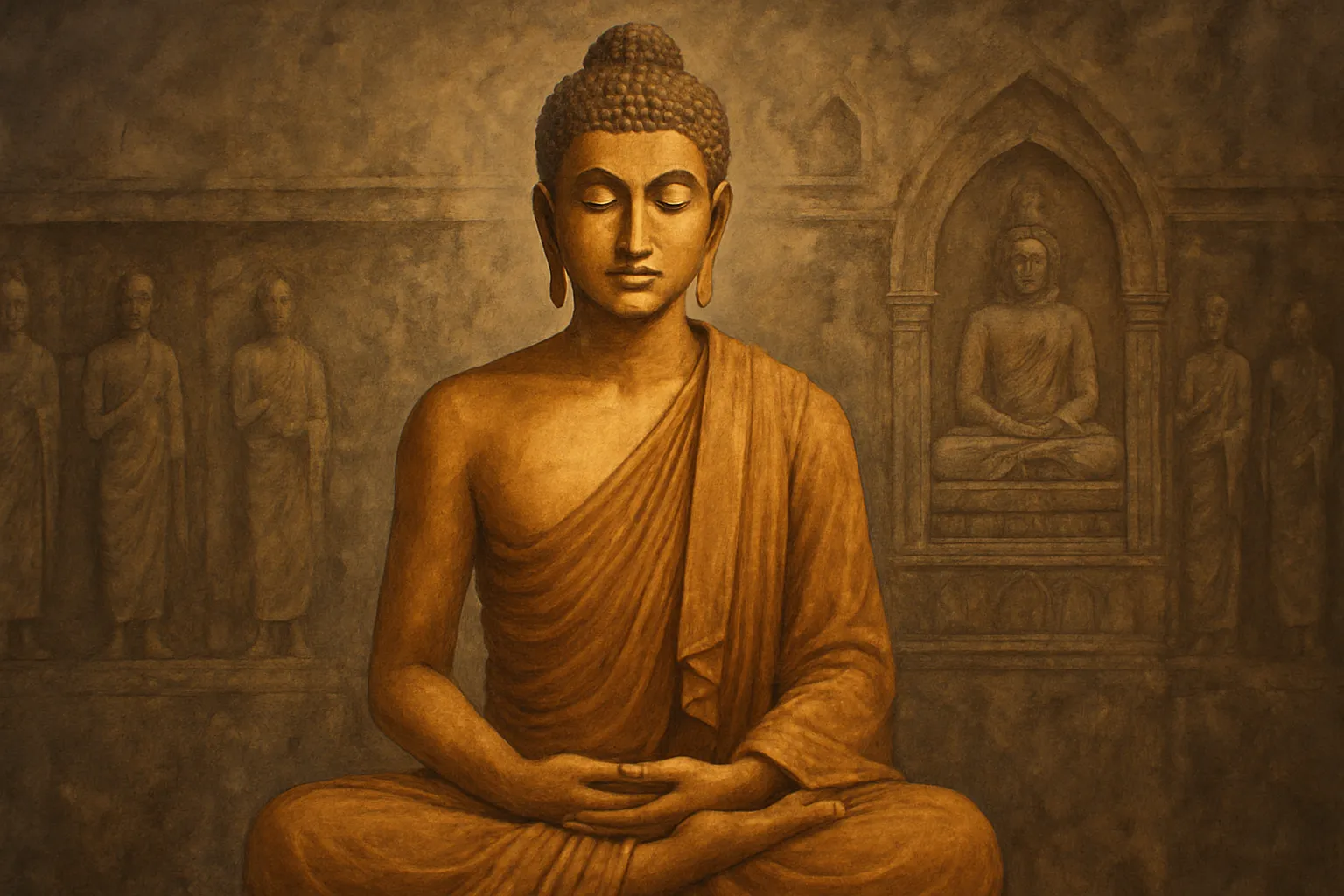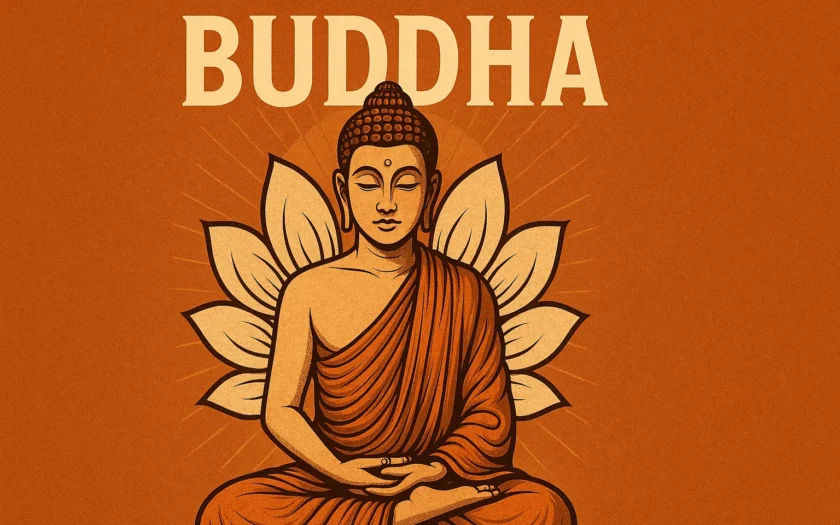Few figures have had as profound an influence on the spiritual, philosophical, and cultural history of humanity as Siddhartha Gautama, universally known as Buddha. His life, marked by privilege, renunciation, inner quest, and enlightenment, laid the foundations of one of the world’s most important religions and philosophical traditions: Buddhism. In this biography, we will critically and educationally explore the key aspects of his life, teachings, and enduring legacy.
The Birth of Siddhartha Gautama
A Birth Surrounded by Omens
Siddhartha Gautama was born around 563 BCE in Lumbini, a small kingdom in what is now Nepal. His father, King Suddhodana, ruled the Shakya clan, while his mother, Queen Maya, died a few days after his birth.
Legend says that his birth was preceded by several omens: Queen Maya dreamt of a white elephant entering her womb, symbolizing purity and greatness. Upon his birth, the kingdom’s sages predicted that the child would either become a great king or an enlightened sage. To steer him away from the spiritual path, Suddhodana raised him in luxury, shielding him from any contact with suffering.
Youth in the Palace: A World of Illusions

A Carefully Orchestrated Life of Pleasure
From childhood, Siddhartha was surrounded by wealth, music, lush gardens, and sensory pleasures. He received the best education and married Yashodhara, with whom he had a son, Rahula. Yet, despite this idyllic environment, Siddhartha felt an inner void—a deep unease about the meaning of existence.
The king prevented him from seeing illness, aging, or death, believing this would keep him from pursuing a religious life. But this protection would not last forever.
The “Four Encounters”: Awakening Awareness
A Shocking Reality Check
At age 29, during a trip outside the palace, Siddhartha encountered four scenes that would transform his life:
- An old man: revealed the inevitability of aging.
- A sick man: exposed physical and mental pain.
- A corpse: reminded him of inevitable death.
- An ascetic: inspired him with the possibility of finding inner peace.
These visions shattered the illusionary world in which he had been raised. Siddhartha understood that worldly pleasures were fleeting and that suffering is inherent to existence.
The Great Renunciation
Abandoning His Princely Life
Troubled by these revelations, Siddhartha decided to abandon his life of comfort. Secretly, one night, he left the palace, renouncing his family, title, and possessions. This act is known as The Great Renunciation.
His goal was to find the path to overcome human suffering. He became a wandering ascetic, dedicating himself to meditation, extreme fasting, and studying various philosophical and religious traditions of India.
The Path of Extreme Asceticism

The Mistake of Extremes
For six years, Siddhartha practiced severe asceticism alongside other spiritual seekers. He starved himself nearly to death but soon realized that this path also did not lead to liberation.
This period taught him a crucial lesson: neither luxury nor extreme self-mortification leads to awakening. Thus was born the concept of the Middle Way: avoiding extremes and seeking balance.
Enlightenment Under the Bodhi Tree
The Transformative Moment
Eventually, Siddhartha sat under a sacred fig tree in Bodh Gaya (present-day India), vowing not to rise until he found the truth. After several days of deep meditation, facing temptations and doubts (personified by the demon Mara), he reached enlightenment.
At that moment, he comprehended the Four Noble Truths:
- Existence involves suffering (dukkha).
- The origin of suffering is desire and attachment.
- Suffering can cease if desire is eliminated.
- There is a path (the Eightfold Path) to the cessation of suffering.
From that instant, he was known as Buddha, the “Awakened One.”
The Beginning of Buddhism

The First Sermon at Sarnath
Soon after his enlightenment, Buddha delivered his first sermon at Sarnath, to his former ascetic companions. There he presented the Four Noble Truths and the Eightfold Path, establishing the foundations of Buddhism.
For the next 45 years, Buddha traveled across northern India preaching, forming monks (the sangha), and teaching a path based on:
- Right wisdom (prajna)
- Ethical conduct (sila)
- Mental discipline (samadhi)
His teaching was revolutionary: not based on gods or rituals but on inner transformation.
His Death and Legacy
The Parinirvana
At 80 years old, Buddha passed away in Kushinagar, reaching Parinirvana, the final state of liberation after death. His last words were a reminder of the impermanence of all things and the importance of self-discipline.
After his death, his teachings spread beyond India, reaching all of Asia and eventually the Western world. Over time, various Buddhist schools emerged: Theravada, Mahayana, and Vajrayana, adapting to different cultures while preserving the core essence.
The Historical Impact of Buddha
Beyond Religion
Buddha was not only a religious leader but also an ethical thinker, social reformer, and example of introspection. His rejection of caste, emphasis on compassion, and method of self-exploration continue to be studied by both believers and scholars.
Buddhism has influenced:
- Modern philosophy and psychology.
- Meditation and mindfulness techniques.
- Social and political pacifist movements.
Even after centuries, the core questions Buddha raised still resonate: What is the nature of suffering? How can we achieve inner peace?
Criticism and Modern Perspectives
A Critical Approach
Although Buddha’s figure is universally respected, modern studies point out:
- The difficulty of separating history from legend in traditional accounts.
- The multiple interpretations of his teachings over the centuries.
- Tensions between original Buddhism and its later institutional adaptations.
Even so, his message of introspection, balance, and compassion remains profoundly relevant.

The life of Buddha represents one of the most moving spiritual journeys in human history. Born into luxury, he renounced everything in search of answers. He understood the roots of suffering and proposed a practical path to liberation.
Today, more than 2,500 years later, millions worldwide continue to draw inspiration from his teachings, whether as a religious path or a philosophy of life. Buddha’s story reminds us that the most important journey is not outward, but inward.

